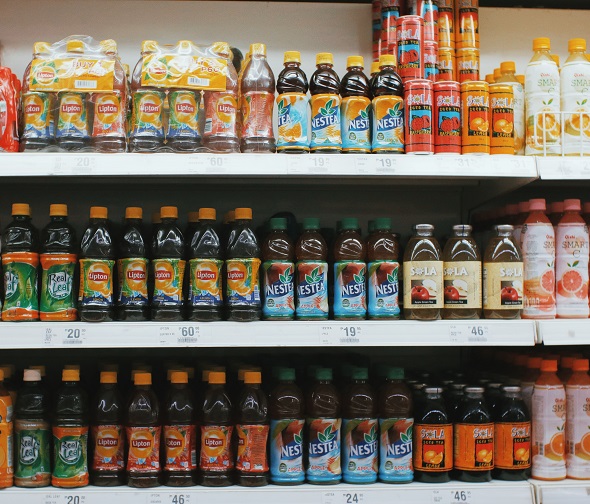In recent years, consumers have become increasingly health-conscious, driving demand for products with reduced sugar content. This shift is reshaping the food and beverage industry, as companies race to meet the growing preference for healthier alternatives. The push for sugar reduction is more than just a fleeting trend—it represents a fundamental change in consumer behavior, regulatory standards, and product development.
What is the latest trend in reducing sugar in 2024? What technology can achieve these changes? And how does the company respond to the constantly changing sugar substitutes?

1. The consumer demand for reduced sugar products
The global rise in lifestyle diseases such as obesity, diabetes, and heart disease has placed sugar consumption in the spotlight. According to numerous health studies, high sugar intake has been directly linked to these conditions, prompting consumers to rethink their diet choices.
Surveys reveal that many consumers are now reading food labels more closely, actively seeking out low-sugar or sugar-free products. A significant driver of this trend is parental concern about childhood obesity, leading to a focus on sugar reduction in products aimed at children, such as cereals, snacks, and beverages.
With increased awareness, food manufacturers are responding by reformulating products, replacing sugar with healthier or lower-calorie alternatives, and launching entirely new product lines designed to cater to these evolving preferences.
2. Regulatory pressure and industry response
Governments across the world are implementing regulations to curb sugar consumption, further fueling the sugar reduction trend. For example, countries like the United Kingdom and Mexico have introduced sugar taxes on high-sugar beverages. Similarly, the U.S. Food and Drug Administration (FDA) requires food labels to disclose added sugars, making it easier for consumers to avoid them.
These regulations are forcing food and beverage companies to rethink their strategies. As a result, many brands are now focusing on reducing added sugars and exploring natural sweeteners to maintain product appeal without compromising flavor.
Key regulatory moves impacting sugar reduction:
· Sugar Taxes: Implemented in several countries to reduce the consumption of sugary drinks.
· Updated Nutrition Labels: In various regions, governments are enforcing clear labeling requirements for added sugars.
· Health Campaigns: Public health initiatives aiming to reduce sugar intake by increasing consumer awareness.
3. Natural sweeteners on the rise
One of the biggest trends in sugar reduction is the use of natural sweeteners. These alternatives offer the sweetness consumers crave without the added calories or the negative health impacts associated with traditional sugars. Popular natural sweeteners include:
· Stevia: Derived from the leaves of the Stevia rebaudiana plant, stevia is a zero-calorie sweetener that has gained widespread popularity. It is up to 300 times sweeter than sugar but does not raise blood glucose levels, making it an excellent option for diabetic-friendly products.
· Monk Fruit: Another natural sweetener, monk fruit extract is a zero-calorie option that has become a favorite for sugar-conscious consumers. It is highly potent, meaning only a small amount is needed to achieve the desired sweetness.
These sweeteners are increasingly being incorporated into a wide range of products, from baked goods to beverages. As consumer demand for natural ingredients grows, brands that innovate in this space stand to benefit from this shift.
4. Sugar reduction without compromising taste
One of the biggest challenges in sugar reduction is maintaining the taste and texture that consumers love. Sugar plays an important role in food and beverages beyond sweetness; it also adds bulk, enhances mouthfeel, and helps preserve shelf life.
To solve these issues, manufacturers are leveraging new technologies and formulations to create sugar alternatives that can mimic the functional properties of sugar. For example:
· Blended Sweeteners: Many products now use a combination of sweeteners, such as stevia and erythritol, to achieve a sugar-like taste with fewer calories. Blended formulations can replicate the texture and flavor of sugar while offering a more natural ingredient list.
· Fiber Additives: Adding dietary fibers such as inulin or soluble corn fiber can help mimic the bulk and texture lost when sugar is reduced. These fibers not only provide structure to products like baked goods but also offer additional health benefits by improving digestive health.
· Flavor Modifiers: Some companies are using flavor modifiers that enhance the perception of sweetness, allowing them to reduce the actual sugar content without sacrificing taste. These modifiers can make lower-sugar products taste just as indulgent as their full-sugar counterparts.
One of the major advantages of glycosylated steviol glycosides is their increased thermal stability. This property ensures that the sweetness is retained even when exposed to heat, making them suitable for a wide range of applications, from baking to cooking. Manufacturers can rely on these modified glycosides to deliver consistent sweetness in high-temperature processes.
Case study: Coca-cola's sugar reduction efforts
A prime example of how companies are approaching sugar reduction is Coca-Cola. In response to changing consumer preferences and regulatory pressure, Coca-Cola has reformulated many of its products to reduce sugar content. Their efforts include using stevia in some of their beverages and offering a wider range of low- and zero-sugar options.


5. Emerging trends in sugar reduction
Beyond natural sweeteners and reformulation techniques, there are other exciting trends that point to the future of sugar reduction:
· Sugar Reduction in Alcoholic Beverages: The rise of “better-for-you” alcoholic beverages, such as hard seltzers, which are low in sugar and calories, has created a new market for health-conscious drinkers. These beverages often use sugar substitutes to maintain flavor without adding unnecessary sugars.
· Personalized Nutrition and Sugar Reduction: The idea of personalized nutrition is growing, with companies using data to tailor products to individual health needs. This includes the potential for sugar reduction strategies that cater specifically to a consumer's metabolic profile or dietary goals.
· Plant-Based Foods with Lower Sugar Content: The booming plant-based food market is also seeing a push towards lower sugar content. Plant-based dairy alternatives, such as almond milk or oat milk, are often high in added sugars, but brands are working to reduce sugar without compromising taste.
6. The Corporate Imperative for Sugar Reduction
For companies, sugar reduction is not just about meeting consumer demand—it's also about staying competitive in a rapidly evolving market. Brands that fail to innovate in this space risk being left behind as consumers and regulators push for healthier options.
In the baking industry, glycosylated steviol glycosides allow manufacturers to produce lower-calorie cakes, cookies, and other treats. Their heat stability ensures that the desired sweetness is preserved throughout the baking process.
Many food and beverage companies have already taken significant steps to reduce sugar content in their products. Nestlé, for instance, has committed to reducing the sugar content in its portfolio, while PepsiCo has launched lower-sugar versions of its best-selling products.
Strategic Opportunities for Corporate Buyers
· Formulating healthier products: Companies that invest in developing reduced-sugar formulations can capitalize on the health trend and offer products that appeal to a broader, health-conscious audience.
· Innovating with natural sweeteners: The rise of natural sweeteners presents a lucrative opportunity for businesses to create cleaner labels and meet consumer demand for more natural, less processed ingredients.
· Collaborating with food scientists: Partnering with food scientists and flavor houses to develop cutting-edge sugar reduction technologies will help companies maintain the taste and texture consumers love while significantly reducing sugar content.


Sugar reduction trends are transforming the food and beverage industry, driven by consumer demand for healthier products and increased regulatory scrutiny. Companies are responding by adopting natural sweeteners, leveraging new technologies, and reformulating products to reduce sugar while maintaining taste.
Corporate buyers in the food and beverage sector must keep an eye on these trends and act quickly to innovate and adapt to the changing landscape. The future of sugar reduction is here, and those who embrace it will have a competitive edge in a market that increasingly prioritizes health and wellness.
Related Recommendation
All images in this article are sourced from: GL Stevia, Freepik,